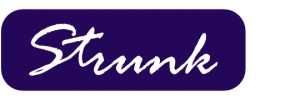Bankers Look for Ways to Make More Money
Strunk recently attended two national banker’s conventions and both were well attended by community bankers from across the country. The exhibit halls at both had a lot of vendors no others offer three different types of income producing programs like Strunk does.
1) Strunk’s Overdraft Privilege program is being used by over 1,800 banks across the country. We help financial institutions manage the day to day overdraft process as a line of business…and we guarantee compliance. With the recent announcement that the Senate has killed the proposed CFPB guidance on limiting banks to charging no more than $5 per overdraft, now is the time to revisit your overdraft payment process.
2) Strunk Secure Checking program will increase fee income by $50 per checking account per year and it is currently being used by over 900 banks nationwide. Consumers are willing to pay for value in a checking account and you can still maintain free checking.
3) Our Loan, Relationship, and Deposit Pricing tool will increase your net interest income by at least 25 basis points. We have worked with over 400 community banks and our analytics package will help you identify areas to increase NII. You set the rates based on the Return on Equity you want to achieve. Many community banks net interest income is well below the 60th percentile compared to peers when looking at year-end UBPR numbers. It doesn’t have to be that way.
Since 1993 Strunk has been helping banks increase income. Contact Strunk at 800.728.3116 or info@strunkaccess.com to find out how we can help your bank.


